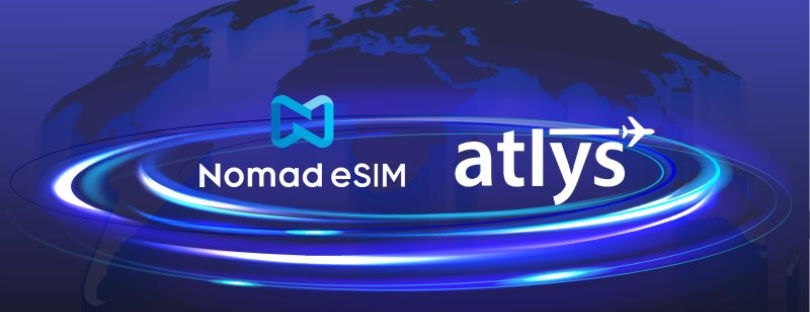
The €2.50 eSIM That Saved My Remote Work Day!
I wasn’t planning to be the person frantically searching for mobile data in the middle of a Croatian fishing village—but there I was, standing outside a bakery with 4% battery, 15 minutes until a video call with a potential client, and no Wi-Fi in sight.
Let me back up.
I’ve worked remotely for over four years now — hopping between co-working spaces, Airbnb rentals, and hotel lobbies, from Lisbon to Singapore. I consider myself fairly prepared. I travel with two phones (don’t judge), a power bank, an unlocked router, and usually, at least one local SIM card. But that day, I got cocky. I’d been relying on my Airbnb’s Wi-Fi for three days without a hiccup. Until it just… stopped.
No warning. Just endless buffering, a frozen Zoom window, and my heart sinking as I realized I was about to miss the most important call of the month.
I didn’t have time to figure out what was wrong with the Wi-Fi. I didn’t have a local SIM. My backup phone’s roaming was unusably slow. And I couldn’t reschedule the call — it was with a client I’d been chasing for weeks, someone who wanted a travel tech marketing partner for a European rollout.
Panic started to set in.
Then I remembered something
A few weeks earlier, a friend mentioned they’d used a random €2 eSIM in Turkey and got solid 4G speeds. I’d laughed it off. “You get what you pay for,” I told them, thinking it was probably throttled to death or full of hidden catches. But in that moment — sweating in the sun with my laptop bag digging into my shoulder — I remembered their tip.
I opened the eSIM marketplace app I’d recently downloaded out of curiosity (thankfully still logged in), and boom: there it was.
€2.50 for 1 GB in Croatia. Valid for 3 days. Delivered instantly.
Could this actually work?
Fastest decision of my life
With 4% battery, I tapped through the checkout process like a machine. I scanned the QR code with my phone, installed the eSIM, and enabled mobile data — and for a moment, nothing happened.
Then, the signal bars appeared. 4G. Then LTE. Then full bars.
I didn’t cheer—not yet. I opened a browser. It loaded instantly. I opened Google Meet. It worked. Video? Smooth. Mic? Check. I had a signal. I had data. I had five minutes to find somewhere to sit.
I took the call… on a bench behind the bakery
It wasn’t glamorous. There was a faint smell of sourdough and seaweed. But that €2 eSIM gave me a stable, uninterrupted 35-minute video call — from the literal edge of nowhere — that resulted in a signed contract two days later.
That cheap, last-minute, no-name-brand eSIM saved my entire day. Possibly my quarter.
What it taught me about digital survival
I’ve always been a fan of the “just in case” mindset when it comes to travel — backup chargers, photocopies of IDs, a bit of local currency tucked somewhere obscure. But I’d never applied the same philosophy to data. I figured between Wi-Fi and my usual SIM cards, I’d be fine.
Wrong. cheap eSIM for travel
That experience made me rethink everything I knew about remote work logistics — and why niche eSIM providers are wildly underrated. Here’s what I learned:
1. Niche eSIM providers often have better local partnerships
The eSIM I bought wasn’t from one of the big names. It was a lesser-known provider I found through a multi-brand platform. I’d never heard of them before — but clearly, they had a good local deal in Croatia. The connection was better than my roaming SIM had offered anywhere in the country.
Lesson? These small players often piggyback on strong local networks without the big-brand markup.
2. Instant activation isn’t just a nice-to-have — it’s a lifeline
If this had required a physical SIM, I’d have been toast. No shop nearby. No time to wait. But the eSIM was emailed to me, activated in under 60 seconds, and I was online immediately. That kind of agility is gold when you’re living the remote lifestyle.
3. €2 is the cheapest insurance I’ve ever bought
It’s easy to dismiss low-cost eSIMs as too good to be true. But for €2, I got 1GB of high-speed data that literally saved a business deal. Even if I’d used just half of it, that’s €1 for peace of mind. The value is insane when you put it in context.
Now? I always keep a few of these “cheap backup eSIMs” downloaded and ready to go.
4. You don’t need to rely on Wi-Fi anymore (and shouldn’t)
We romanticize cafés and co-working spaces, but Wi-Fi is never guaranteed. Even “fast” connections can be unstable at the wrong moment. Cellular data is often more stable — especially with a solid eSIM — and the price gap has closed dramatically. I no longer trust Wi-Fi with anything important.
5. Digital survival means thinking like a backpacker meets hacker
It’s not just about working from the beach. It’s knowing how to pivot, patch together a solution, and stay connected when everything else fails. That €2.50 eSIM wasn’t just a product — it was a tool. And I’m now obsessed with building a travel stack that includes tools like this.
So what now? cheap eSIM for travel
I’ve since created a little “remote work emergency kit” on my phone:
- Three eSIM apps
- A few pre-downloaded eSIM profiles for different regions
- Offline versions of my most-used tools
- A sticky note reminding me that Wi-Fi will betray me
And every time I look at a €2 or €3 eSIM deal now, I don’t roll my eyes. I stock up. Because I’ve learned that the cheapest eSIM is often the one that saves the most.
Final thoughts
If you’re a remote worker, digital nomad, or even a weekend traveler with an occasional Zoom call, don’t sleep on eSIMs — especially the ones you’ve never heard of. They might just be your secret weapon when things go sideways.
That €2.50 spent outside the bakery? Best investment I made all year. cheap eSIM for travel










